Last night was my first class back at Contact Kicks Dojo in a week. It’s been a rough month being sick with the flu. Last night was the first day in a while that I was beginning to feel like my old self.
It was also the first really warm day of the year, at around 29 °C. So, it was a little sticky but I’ll take it over the cold.
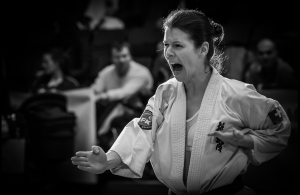
We had class based on kihon and Sensei Fogarasi was encouraging us to put our spirit into. Kiai on specific points or movements, and a loud Osu! to show we comprehend.
Sensei was telling us that he wasn’t hearing the Kiai from the lower Kyu’s, like myself. Having strong kiai is something I pride myself in, and I was frustrated that I couldn’t deliver it as usual, because my throat was still bothering me. But I continued bellowing out the strongest kiai I could muster, and eventually my throat didn’t bother me.
Sensei Fogarasi told us the importance of Kiai, which I didn’t have a clear meaning on myself, until he explained it. We all do it, its different for everyone, but why do we do it?!
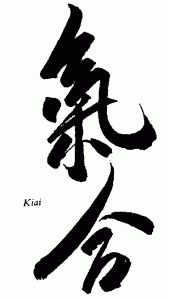 Kiai (気合) (pronounced “key-eye”) is a Japanese term used in most forms of traditional Japanese Budo, or martial arts, Sensei Fogarasi explains. It is a yell performed before, during or after specific techniques or movements. Kiai is a compound of Ki (気) meaning mind, breath or spirit and Ai (合), a stem of the verb awasu (合わす), “to unite”; therefore literally Kiai means “concentrated or united spirit“.
Kiai (気合) (pronounced “key-eye”) is a Japanese term used in most forms of traditional Japanese Budo, or martial arts, Sensei Fogarasi explains. It is a yell performed before, during or after specific techniques or movements. Kiai is a compound of Ki (気) meaning mind, breath or spirit and Ai (合), a stem of the verb awasu (合わす), “to unite”; therefore literally Kiai means “concentrated or united spirit“.
I read somewhere during my research on Kiai today that a western school teacher teaching in Japan asked his students “Who knows what Kiai means?” A young Japanese student relayed that it’s meaning to him was “Courage”. The act of Kiai directs focus, power, and generates “courage” in the moment uniting body and spirit.
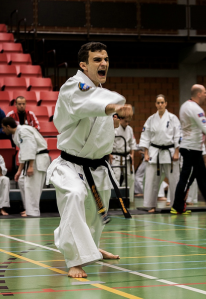
Essentially it is a battle cry. There are no specific sounds involved. They are unique to the individual practitioner. Traditional Japanese Dojo generally use single syllables beginning with a vowel. You don’t actually say the word “kiai”.
In Japanese martial arts, the kiai was traditionally used to startle an opponent, intimidate, express confidence,
or express victory. In kendo, for example, a point is only given by the Shinpan (referees) if the hit is accompanied by a strong, convincing kiai.
As Sensei Fogarasi explained to us, we need to focus on where the sound is generated. The kiai should start in the Hara (腹). This means the yell should come from the belly, not the throat. The easiest way to know if you are doing correctly is to stand with your hands at your sides, push hard on both sides of your belly (below your ribs) with the inner ridges of your hands (the space between your thumb and index finger), then cough. Feel that? That is where your kiai muscle is located, not the throat.
When you are a beginner in Karate it can be embarrassing and you can feel self-conscious, I spent a few classes unsure what I s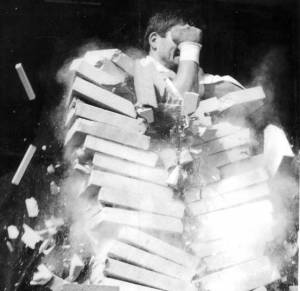 hould be “saying” when I kiai. I had to stop worrying about what “sound” I was producing more about the ferocity and intent of it. Sensei praising good spirit and kiai was also very helpful to me overcoming my shyness.
hould be “saying” when I kiai. I had to stop worrying about what “sound” I was producing more about the ferocity and intent of it. Sensei praising good spirit and kiai was also very helpful to me overcoming my shyness.
The thing about Kiai is that though you might feel awkward at first, there is no doubt that when you do kiai, and it feels right, you feel energy inside you. Your strike has more force, stronger and sharper.
Sensei relayed to us about a study that was done where one group performed an activity with kiai, the other without. The group that utilized kiai produced a great deal more of force.
The kiai should shake the foundation. Sensei tells us the story of visiting an ocean pier for the first time as a child. As he was walking one of the ocean liners blew it’s horn. He dropped and covered out of fear from the earth shaking sound. This is the effect your kiai should have.
OSU!
Still having trouble finding your voice? This is something else I found on Kiai, and it really exemplifies it.
The Story of the Lion on the Savannah
“You are standing on a savannah.
There are no trees around. No buildings or people. Nothing.
But there’s a lion in front of you.
And this lion is very hungry.
The lion roars!
“Ohmigosh, he’s gonna attack!”, you think.
The lion roars again, even louder.
In approximately three seconds, you’ll become lion food.
The lion shows its sharp teeth.
You have two seconds left of your life…
You can’t run.
You can’t fight.
You can’t hide.
One second left…
The lion roars a third time, louder!
You have ONE last chance to convince it to not eat you – that chance is RIGHT NOW.”
What do you do? KIAI!!!!
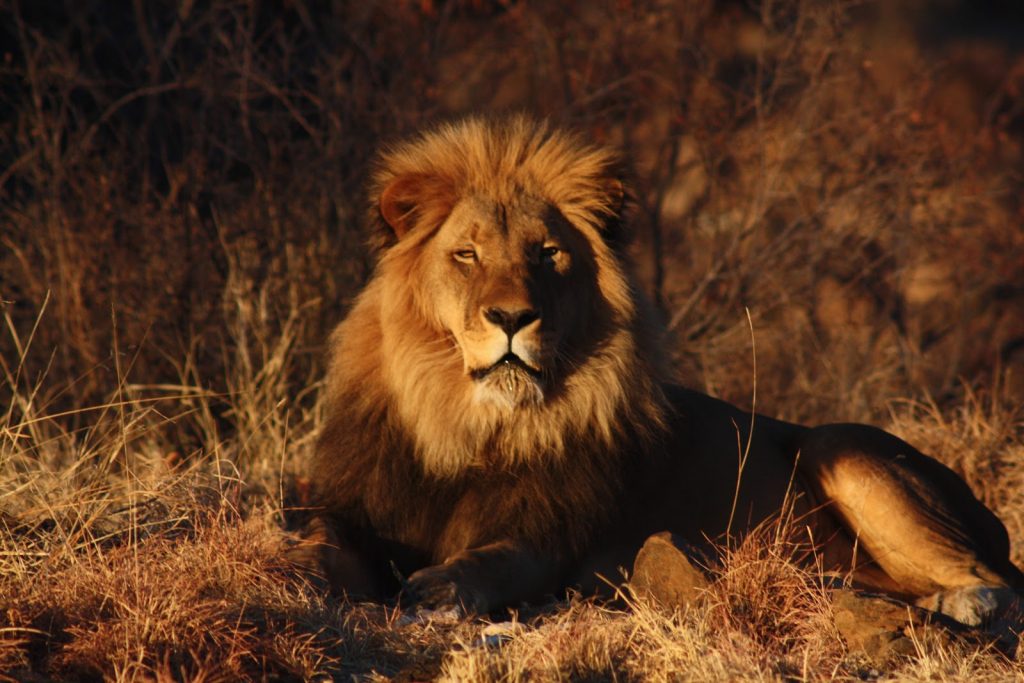
[…] we are rotating correctly on our feet, that our hands are in the correct position. Eventually, with KIAI ! reeling out loudly, the movements become more fluid and natural. We move through stances, […]
[…] karate fifth world championship (1/four)Legend of Kyokushin Karate – Kenji MidoriKarate Battle Cry .recentcomments a{display:inline !important;padding:0 !important;margin:0 […]